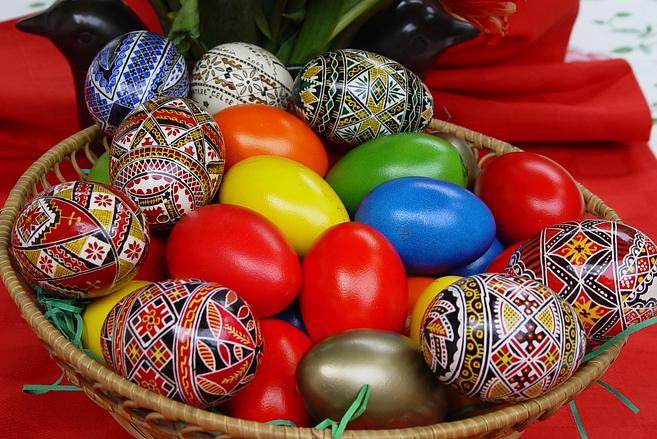Orthodox Easter in Romania: budgets and plans for 2016

Orthodox Easter is one of the most important religious celebrations in Romania, alongside Christmas. Traditions on such holidays are important and very important for 90% of respondents to an IRES survey.
An overwhelming majority - 94% of respondents said that they would celebrate the Orthodox Easter this year (happening on May 1). Although 83% of those who celebrate Easter said they usually go to the Resurrection service, only 87% of them plan to go to Church this year.
Almost 70% of all survey participants believe that the Orthodox and the Catholic Easters should be celebrated on the same day.
When it comes to holiday budget, 44% of respondents said that the money they’ve alloted to this holiday is enough to buy everything they need. About a third admitted that the money is just enough, while 15% think that they would have to give up on some products, and 7% said that the budget doesn’t even cover the basic products.
About a quarter - 22% have a budget of RON 600 (some EUR 135) for the Easter meal, while 19% plan to spend between RON 401 (EUR 90) and RON 600 (EUR 135). Some 10% have a budget between RON 201 (EUR 45) and RON 400 (EUR 90), and 14% want to stay below RON 200 (EUR 45). A mere 2% said that they would not spend anything for the Easter meal, while 20% haven’t set a budget yet.
The survey also shows that about half of respondents expect to spend as much as last year on Easter, 27% think their spending will be lower this year, and 21% believe they will spend more.
Some 40% of respondents plan to buy lamb for Easter, but the same percentage said they would not buy this kind of meat. Traditionally, Romanians eat lamb on Easter.
A bit over a third of those who would buy lamb plan to spend between RON 101 (EUR 23) and RON 200 (EUR 45) on such meat, 27% don’t want to pay more than RON 100 (EUR 23), and 12% have a budget between RON 201 (EUR 45) and RON 300 (EUR 67). Only 6% of respondents are willing to pay more than RON 300 (EUR 67) to buy lamb.
Four out of ten respondents will buy eggs for this Easter, while 54% will not spend money on eggs as they already have them in the household, or they have other ways of procuring them. The majority - 95% of those who celebrate the Orthodox Easter will paint eggs, mainly in red (88%), yellow (29%), green (27%), and blue (26%).
This year, both the Orthodox Easter and Labor Day are celebrated on May 1. According to the study, only 65% of respondents know about the dual celebration, a quarter don’t know what else is being celebrated on May 1, while the rest gave other answers.
Four out of ten respondents will have days off for Easter. This is not necsarily good news for tourism, as 65% said they wod spend the Easter at home, 22% would stay at home but visit friends, and only 9% would go on a mini-holiday. Most of those who chose to go on a mini-holiday are young people aged 18 to 35 who will spend their vacation in Romania.
The study was conducted between April 18 and April 21 on a sample of about 1,200 people.
Irina Popescu, irina.popescu@romania-insider.com















